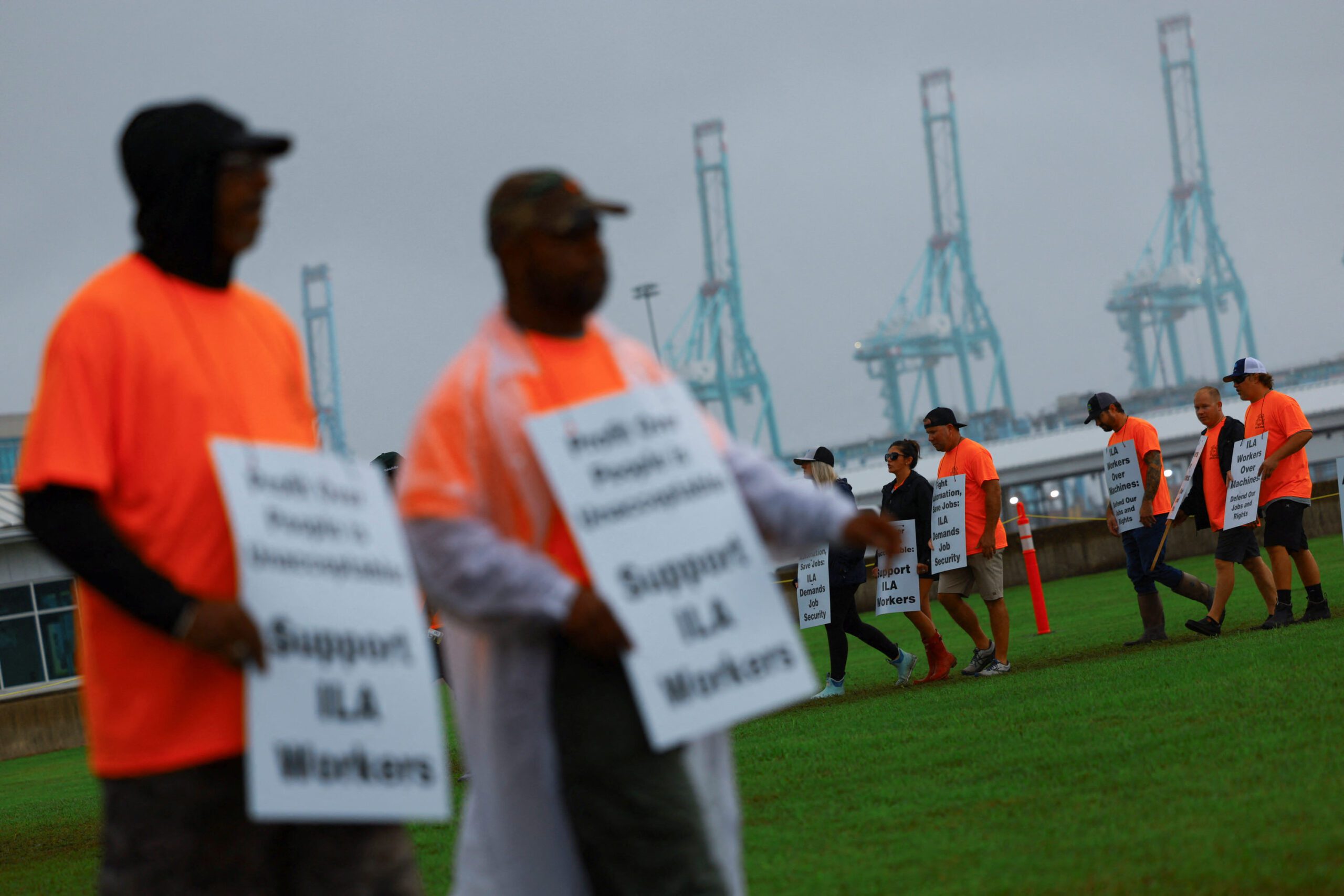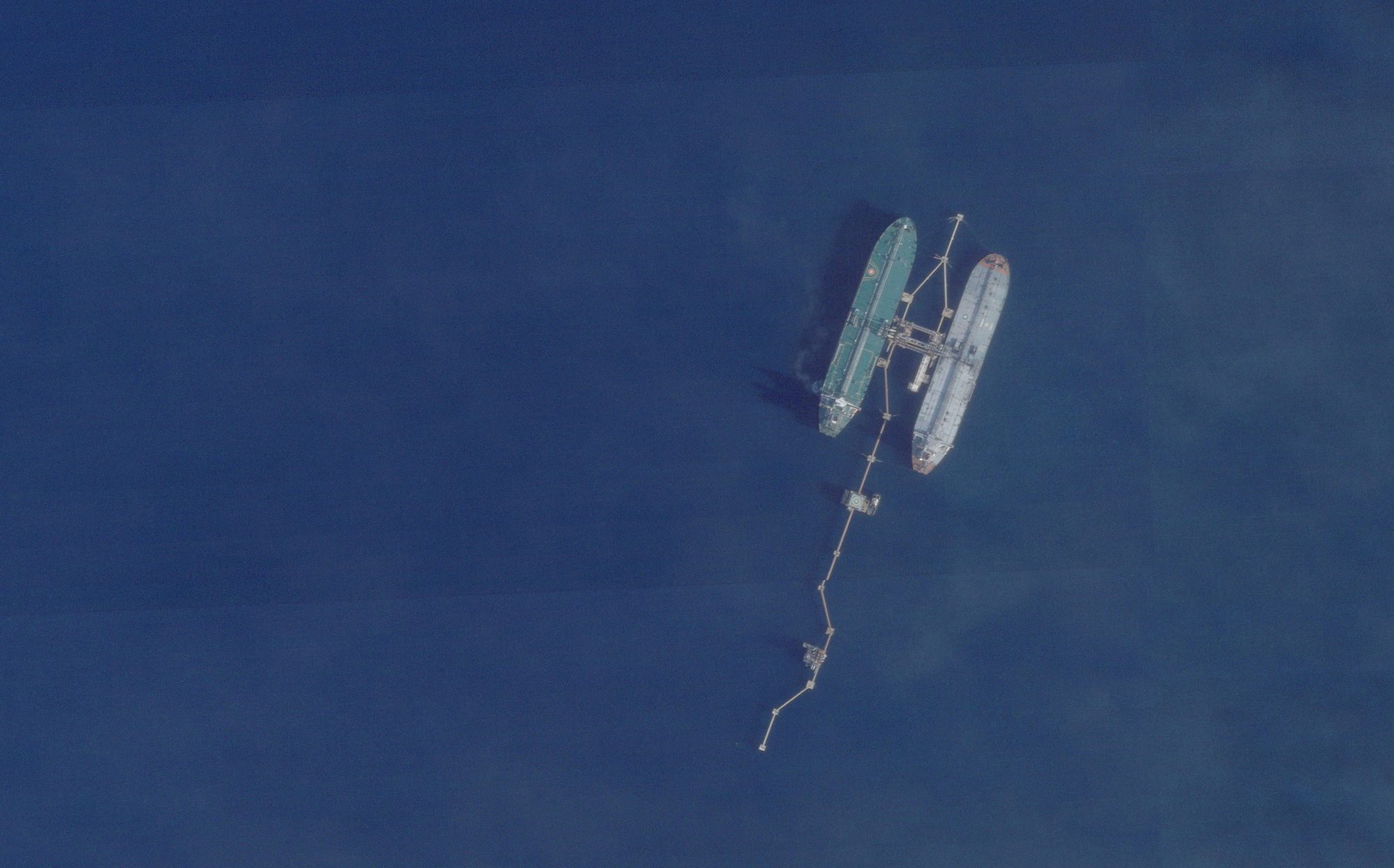By Lori Ann LaRocco
Ongoing side discussions prior to the much-anticipated January 7th meeting between the International Longshoremen’s Association (ILA) and United States Maritime Alliance (USMX) will set the tone and manage expectations of the highly anticipated meeting. The automated gantry cranes at the Port of Virginia and Bayonne Terminal at the Port of New York/New Jersey, the use of computerized truck appointment and other truck gate systems continue to be the focus of the automation and semi-automation battle.
Those familiar with these small group meetings tell gCaptain the technologies being argued were agreed to by the ILA in prior contracts and never displaced jobs.
“These discussions are about existing technologies used by U.S. Terminal operators, not new technologies,” said a terminal operator who has direct knowledge of the discussions. “The technology used at the Port of Virginia and GCT terminal in Bayonne were built from the ground up and never took away union jobs. Now after two contracts, Harold Daggett would like to add at least one dedicated person for each automated RTG (Rubber Tired Gantry Crane) at these terminals even though there is no business need or safety or efficiency gain.”
The salary of that individual would be between $100k–$150k a year based on legacy ILA pay deals, and the individual would watch the crane work.
John Nardi, president of the Shipping Association of New York and New Jersey, said in the Fall of 2024 that performance metrics should be workforce-based, not founded on automated systems. Nardi also cited the enormous costs of implementing automation.
The two prior master contracts (2012 and 2018) that Harold Daggett negotiated focused on shoring up semi-automation and automation deployment language.
In the final version of the 2012 Master Contract, Article Eleven Section One established the New Technology and Automation Committee.
“Where new devices and new methods are utilized or additional automation is implemented, it is recognized that these make the ILA more competitive and their employers more able to provide continued employment. In conjunction with this, the ILA and USMX agree to establish a New Technology and Automation Committee, consisting of the Co-Chairmen and five (5) additional members from each side.”
This language was fleshed out in Article 11 of the 2018 contract: “There shall be no implementation of semi-automated equipment or technology/automation until both parties agree to workforce protections and staffing levels.”
Harold Daggett, along with his two sons, Dennis and John, and four ILA leaders are a part of the ILA New Technology Committee.
Those familiar with the automation pushback this round of negotiations tell gCaptain that Daggett is trying to stop what he and his committee members previously approved.
The Global Container Terminals (GCT) terminal in Bayonne, NJ, out of the Port of New York and New Jersey was announced in 2014. The new terminal with automated technology would redevelop a parcel of the Bayonne Military Ocean Terminal.
The scrutinized semi-automated and automated technologies deployed at the Port of Virginia were approved under prior contracts. It is all a part of the port’s objective to be net-zero carbon by 2040. In January of 2024, the port became the first on the East Coast to power all its terminals with 100% clean energy—eight years ahead of its 2032 target.
In 2023, the Port announced it was moving ahead with its purchase of 36 new automated stacking cranes (ASCs) manufactured by Konecranes based in Finland. The first group is expected to arrive in mid-2025 and the second set in mid-2027. This $150 million purchase of this technology could have only happened if both sides of the technology committee approved it under the 2018 Master Contract.
The $452 million optimization project at NIT started in January of 2018. Terminal capacity was increased by 46 percent using the same footprint. It is important to note that ILA members receive a container royalty. The increase in capacity translated into more royalties for the union workers out of that facility.
After the October strike, the ILA said in a statement, “The ILA just wants to tighten the language that no automation means no automation.”
So, what exactly needs to be tightened?
Those close to the negotiations say Daggett is fighting against additional automation that is devoid of human involvement and is seeking contractual leverage to add workers wherever he wants and not where it is needed. If new technology is proposed, a union worker or workers must be added. This is stated plainly in the 2018 Master Contract. This technology labor stipulation also includes the use of computer software.
One terminal operator tells gCaptain that in the November meeting that derailed, Harold Daggett demanded there should no longer be semi-automated operations in Virginia or Bayonne that are devoid of human involvement and that the existing way of working at those terminals shouldn’t be allowed anywhere else. The discussions also fell apart as the ILA is pushing back on technology that allows online trucking appointments and other truck gate transactions that operate automatically. A clerk should be available to pick up the phone to take down a trucker’s appointment and their information. Based on ILA salary history that is publicly available, a clerk is paid anywhere between $20–41 per hour. The clerk demand should come as no surprise to those in the logistics industry. Harold Daggett has stated publicly that automated toll-booth operations like E-ZPass should be eliminated and the manual process of toll-booth workers should return to New Jersey’s highways.
Terminal operators and ocean carriers tell gCaptain these additional jobs would add inflationary pressures within the supply chain. The salaries of the ILA workers are paid by terminal operators, which are then folded into the service fees that are charged and paid by shippers. Those fees are then passed on to the consumer.
“This will only price out some US exports, which would impact companies as well as increase the price of imports,” said the ocean carrier. “These prices are passed on to the consumer by shippers who have to pay for the increases. An inefficient supply chain only benefits the ILA, who will continue to make good on their promise to cripple the US economy to increase their ranks.”
Despite the inflationary threat, the ILA has the support of both the current and incoming administrations in their fight against automation.
Daggett’s comments after his December 7th meeting with President-elect Trump were, “… the strong support from Trump would encourage the USMX to remove any language on automated or semi-automated equipment in their proposals moving forward.”
In the world of business, capitulation is seen as weakness in negotiation. Daggett cannot walk away without stronger language. When negotiating, both sides compromise a little to reach a deal. Right now, the world of trade is being held hostage in a game of chicken. Tuesday’s meeting will see if anyone blinks.

 Join The Club
Join The Club










